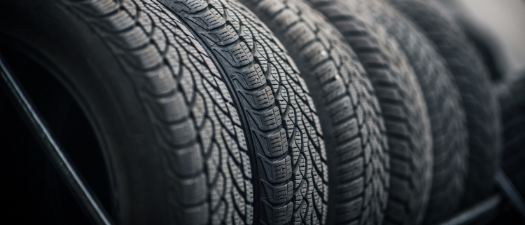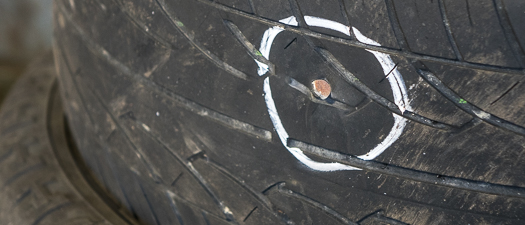Winter Tires 101

HOW DO WINTER TIRES DIFFER FROM SUMMER TIRES?
Winter tires are specifically designed to handle the cold, snowy, and other rough conditions of the winter months. From unique tread patterns to the chemical compound in the tire's rubber, winter tires are built to provide better traction and allow you to have more control in winter conditions.
Rubber
Winter tires use different types of rubber than regular all season or summer tires. The chemical compounds in the rubber of a winter tire rubber allows the tire to maintain flexibility in low temperatures. Since all season or summer tires are made for the warm temperatures and designed to withstand the heat from the road, they become stiff when used in cold temperatures. A stiff tire will lead to less flexibility for grip and less traction when accelerating or stopping.
Tread Pattern
Tread patterns differ greatly from all season or summer tires. They have deeper tread depths with more slots and sipes. The sipes assist with getting as much grip or traction as possible on ice or snow. All of the tread elements combined together allow you to have a better and more controlled handle in the snow, on ice, or in slush.
WHY DO I NEED FOUR WINTER TIRES?
Whether your vehicle has front or rear-wheel drive, winter tires should always be applied to all of the wheels on your vehicle instead of just two. Although some drivers believe that they can get away with just two winter ties, there are good reasons why tire and vehicle manufactures and Sullivan Tire and Auto Service recommend using a full set of winter tires.
Traction Control
If you are only mounting two winter tires to your vehicle, you will lose traction while stopping and cornering or as you try to avoid a sudden obstruction, like an animal, in the road. No matter what kind of vehicle you drive, never mount two tires (or any type of new tire) to the front axle without mounting them on the rear axle, as well. Mounting winter tires to the front axle will greatly increase the risk of losing traction on your rear tires causing you to fishtail or even spin out due to lack of traction.
"I have rear wheel drive so it should be good enough to just mount two winter tires to the rear, right?" Although this seems like a logical conclusion since the power is coming from the rear, the front of the vehicle still needs traction to navigate and steer the vehicle. If the tires in the rear are gripping the road but the tires in the front have no traction and you are unable to effectively steer the vehicle, you could end up losing control of where your vehicle is heading.
Tread Wear
By mounting only two winter tires and leaving your all season or summer tires on, this will cause uneven tread for your complete set of summer or all season tires. When the time comes to change from the winter to the all season or summer tires, the tread wear on the summer or all season tires that were mounted on your vehicle all winter will no longer even with the ones you just mounted. This will result in needing to buy new summer or all season tires sooner than you may have intended.
SWITCHING TO WINTER TIRES
Mounting Winter Tires
Don't wait until you have hit a patch of ice or the first snow fall to mount your winter tires. When the temperatures begin to consistently stay at 45 degrees Fahrenheit or below, head down to your local Sullivan Tire and Auto Service to change from your summer to winter tires.
Removing Winter Tires
Driving on winter tires in warmer weather will wear out the tread on the winter tires faster since they were not designed to withstand the heat. When the snowy conditions have ended and the temperatures begin to rise above 45 degrees Fahrenheit, the winter tires on your vehicle should be changed out for your summer tires. Some northern states require winter tires to be removed before a certain date of the year. Please check with your local Sullivan Tire and Auto Service to see when the deadline for this is.
Need new tires?
Find the perfect tires for your vehicle with our online search tools. We're also offering great deals on a variety of brands. Check them out here!






